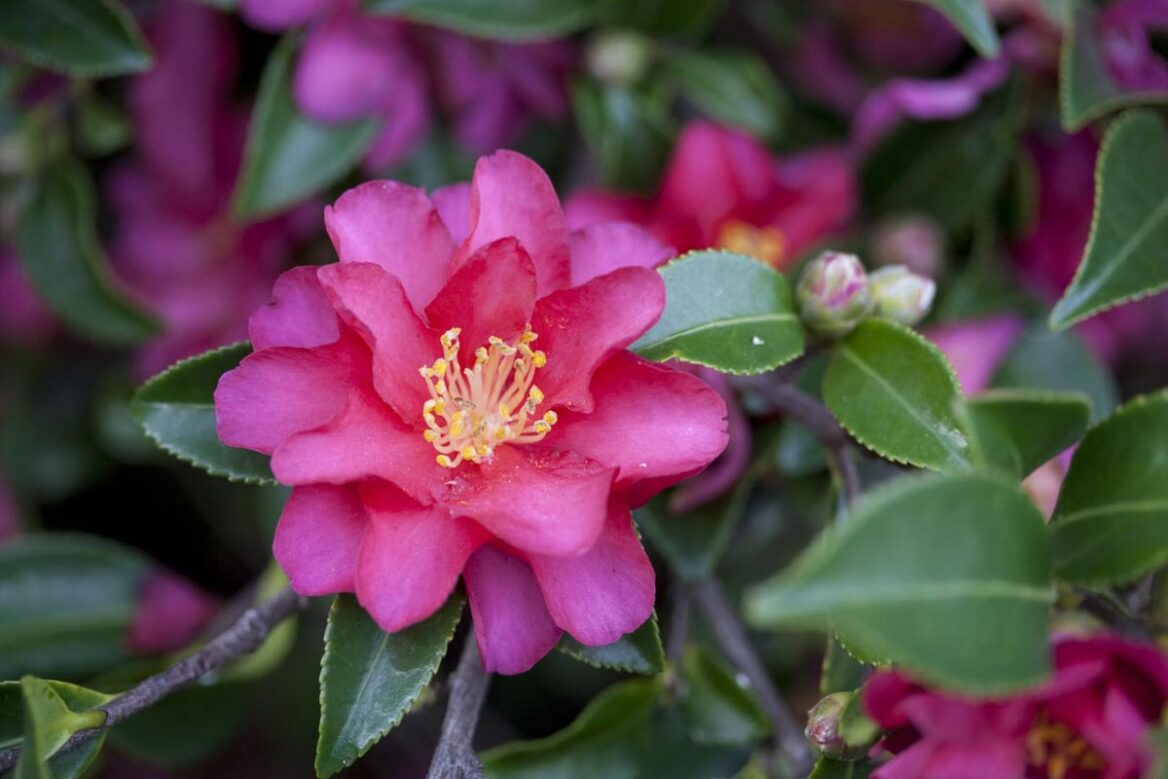Camellia x vernalis ‘Hiryū’
Camellia
Camellia x vernalis ‘Hiryū’ produces bright, red-pink, single to semi-double flowers in abundance. It flowers throughout autumn into early winter, providing a colorful display during the colder months. Camellia x vernalis ‘Hiryū’ is a vigorous and hardy cultivar, making it an excellent choice as a screen or large filler. It grows well in both sun and semi-shade. Camellia x vernalis is evergreen, not native to New Zealand, and a hybrid formed between Camellia sasanqua and Camellia japonica. Learn more about Camellia x vernalis. Camellia x vernalis ‘Hiryū’ was produced in Japan and imported into the United States in 1906 by E. Fenerosa in Mobile, Alabama, United States.
Other common name(s):
Synonyms: Camellia x vernalis 'Flying Dragon', Camellia x vernalis 'Red Bird', Camellia x vernalis 'Scarlet Bird', Camellia x vernalis 'Scarlet Dragon', Camellia x vernalis 'Fire Dragon'
$107.12
Evergreen
Height: 3.0m
Width:
2.0m
Estimated 10 year height and width
Camellia x vernalis ‘Hiryū’ stock information
Full Stocklist| Grade | Height | Standard | Available | I/P | Qty / Price |
|---|---|---|---|---|---|
| 25L | 1.3-1.7m | 2 | 0 |
$107.12Add to cart |

